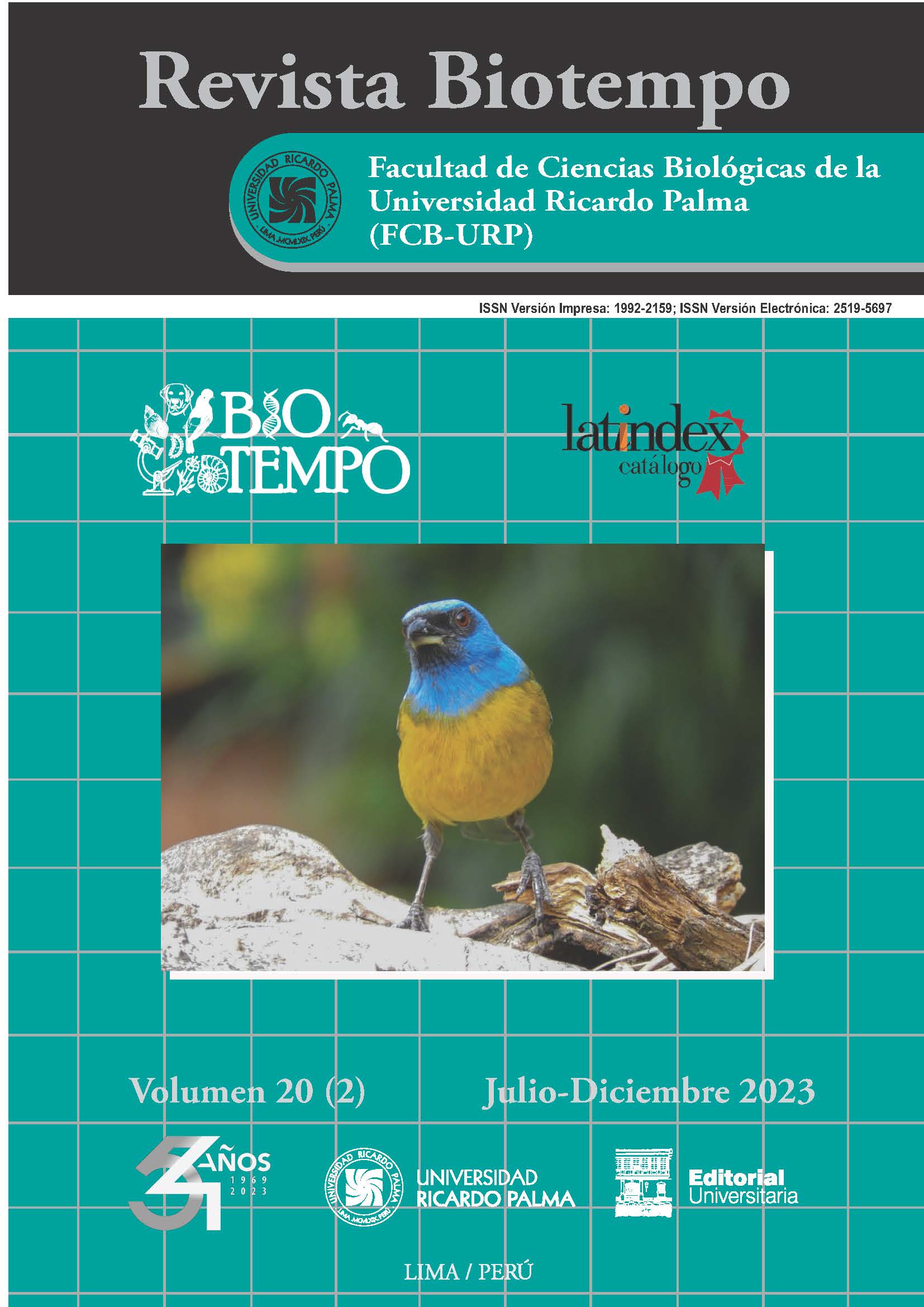Modeling and analysis of Covid-19 infections in Peru
DOI:
https://doi.org/10.31381/biotempo.v20i2.6191Keywords:
contagions, COVID-19, estimation, logistic modeling, Peru, validationAbstract
Describe the COVID-19 pandemic in Peru, carry out mathematical statistical modeling, determine the critical time, the speed with which the pandemic developed and validate the estimated data; have characterized this research; whose objective has been to model and analyze COVID-19 infections in Peru, and compare infected people and estimated infected people; assess the critical time in which the maximum speed of estimated infected people occurs and statistically validate the model. The data on COVID-19 infections until February 24, 2023 has been taken into account; determining that they describe a sigmoidal logistic dispersion; event that was mathematically modeled using the expression , which is a predictive logistic equation. With the predictive mathematical model, the number of people infected and their behavior of COVID-19 in Peru was estimated. Likewise, the speed of people infected with COVID-19 in Peru was evaluated. The critical time (tc) was estimated for which the speed of infected people was maximum, values that are tc=740 days and the maximum speed =6 934.9307 people/day, respectively and the date that there was the maximum speed of infections due to COVID-19 was February 28, 2022. The Pearson correlation coefficient for the time elapsed (t) and the number of infected people (N) in Peru, due to COVID-19, based on 37 cases, was r=-0.79; determining that the relationship between time and the number of infections is real, that the predictive model has a high estimate of the correlated data, that there is a “very strong correlation” between the time elapsed (t) and the number of infected people (N) and that 63% of the variance in N is explained by t. It is concluded that the logistic model can be rigorously applied to pandemic and epidemiological phenomena with high resolution and with a high degree of estimation and, it has been determined that the correlation coefficient has a "very strong negative association" between the number of infections due to COVID-19 and elapsed time in days.










